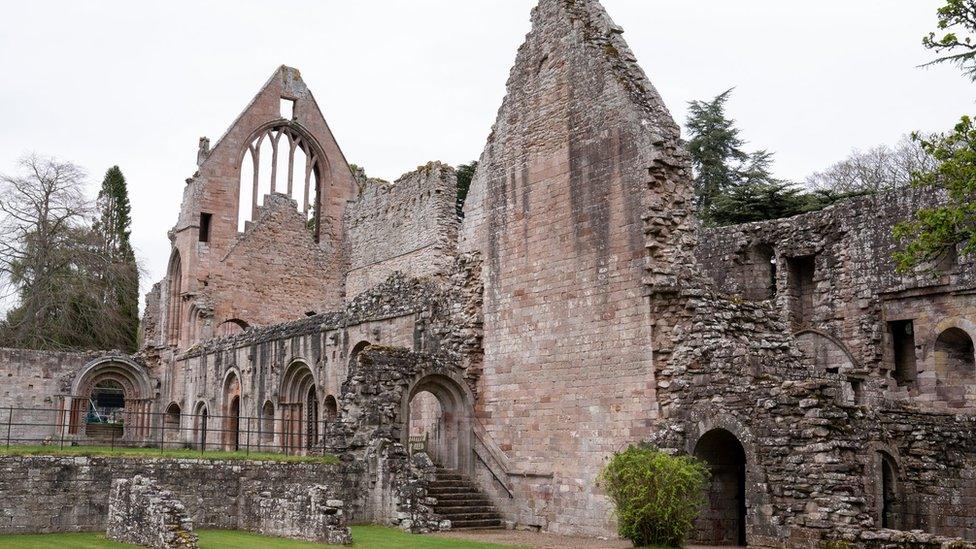Dryburgh Abbey restrictions lifted after safety checks
- Published

Sir Walter Scott is buried at the Dryburgh Abbey site
Access restrictions at the Borders abbey where Sir Walter Scott is buried have been lifted after checks and repairs to its masonry.
Historic Environment Scotland (HES) said visitors could now explore all the internal areas of Dryburgh Abbey.
Parts of the site were closed off last year as a safety precaution for checks on the impact of climate change.
Inspections and any repairs required have now been completed, allowing the public access once again.
Dryburgh Abbey - near St Boswells - was established by Premonstratensian canons from Northumberland in 1150.
While some parts of the site have been accessible to visitors since June last year - including the grounds and the abbey nave - visitors will now be able to explore all internal areas of the abbey, including the historic chapter house.
The impact of climate change on the site has been assessed as well as the deterioration caused by other factors.
HES will share its findings with other groups which operate historic properties.
Director of operations Craig Mearns said: "Dryburgh Abbey has a rich religious history and is perhaps most famously known as the final resting place of one of Scotland's most famous literary writers.
"We are delighted to be able to reopen the interiors of the site once again to the public, where they can take in the beautiful architecture, explore the relics of the abbey, and learn about Scottish history as it happened."